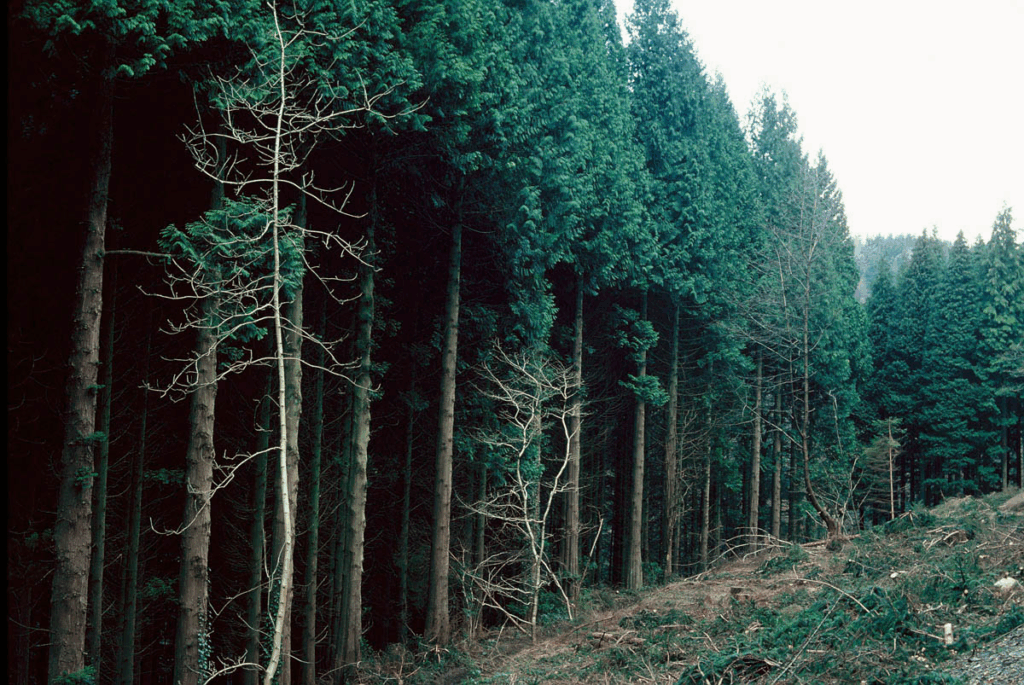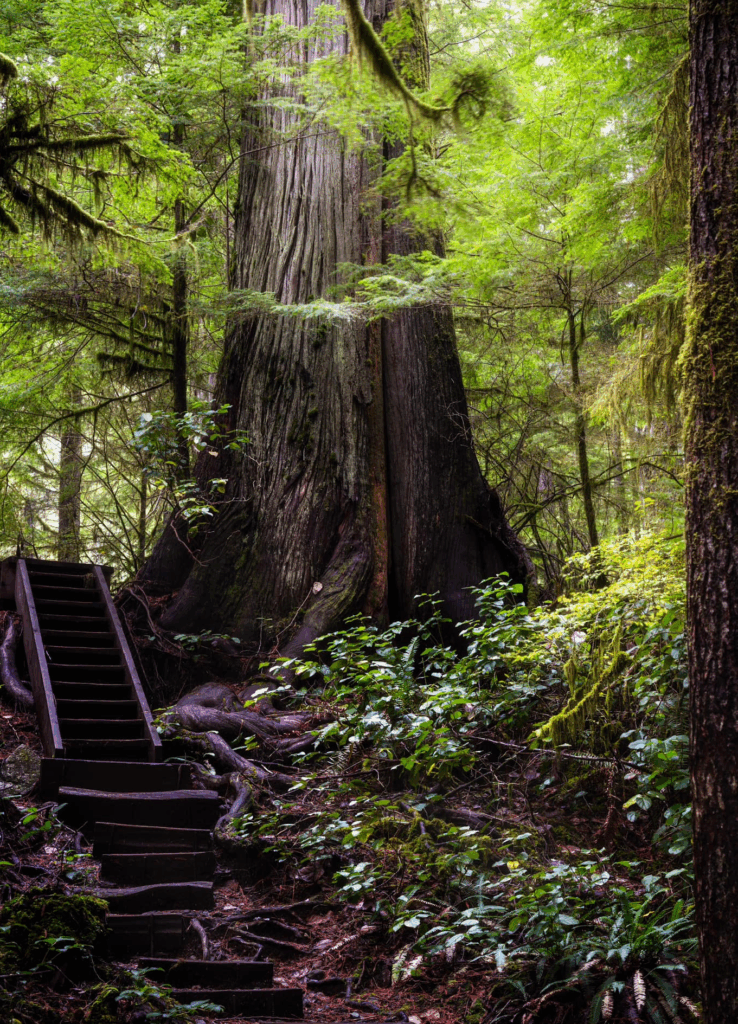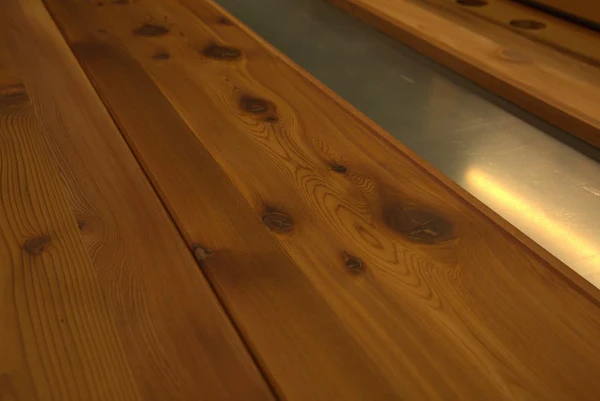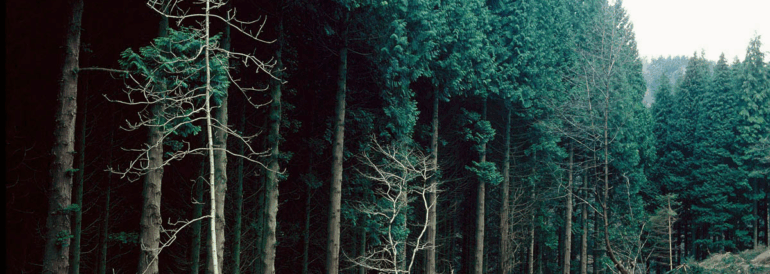What Are Western Red Cedar Trees?
Western Red Cedar (Thuja plicata) is the largest arborvitae currently growing in North America and one of the most representative evergreen conifer tree species of the Pacific Northwest. Being able to grow to a height of 150-200 feet with a trunk twenty feet in diameter, this tree is a living memorial to both the power of adapting and surviving and also a monument to culture.
The tree is classified in the Cupressaceae family, but it is not closely related to the Cedrus cedars; they culturally influenced it, though they are broadly used. Others, well known under the names of Pacific Red Cedar, Giant Arborvitae, and Shinglewood.

Figure 1. A dense stand of Western Red Cedar trees thriving in a moist, shaded forest habitat.
It grows wild in the wild, extending along the southeast Alaska, British Columbia, Washington, and Oregon coastlines, or further inland into the northern states, including parts of Idaho and Montana. In Western Red Cedar, it grows in shady valleys and moist upland forests, as well as temperate Rainforests.
- In the Seattle region, these trees are integral to the ecology and cultural environment, often raising the whole neighborhoods, parks, and green edges. They are plenty crucial to the area of Seattle but are also a keystone species in the PNW, and a valuable resource the world over.
What Are the Key Western Red Cedar Characteristics?
Western Red Cedar is a unique and easy-to-recognize material to work with due to its features:
1. Leaves
The leaves are scale-like and appear in flattened sprays, and quite frequently have white markings on the lower surface. The leaves, when pounded, have a sweet, pungent odor.
2. Bark
kermes-coloured, the bark falls off in oblique stripes. Visions In the past, the Indigenous people discovered the strips of bark and applied them to clothing, mats, and ropes.

Figure 2. Close-up of Western Red Cedar foliage and bark, showing its scale-like leaves and fibrous reddish trunk. (Credits: Ancient Forests | Facebook)
3. The shape of the Crown
The young trees have a crown structure like that of a cone, but on maturation, they develop wavy growth with broad outstretched branches.
4. Size
Trees grow up to over 150ft tall with a diameter at breast height of between 6 and 13ft.
5. Essential Oils
The lumber is tagged with thujaplicins, anti-fungal compounds that make cedar lumber naturally long-lasting and resistant to rot.
- The species features, including why it is called an ecological powerhouse and a worthwhile timber source, are as follows. The results of recent genetic studies point to low genetic diversity of Western Red Cedar, though its impact on long-term adaptability is yet to be understood.
Where Do Western Red Cedar Trees Grow?
Western Red Cedar has one of the largest ranges of all the conifers found in North America.
1. Native Range
along the coastal rainforests of Alaska, down the Pacific Northwest Coast, and into Northern California. Their inland populations reach into Idaho and Montana.
2. Habitat
Prefers several soils, damp, free-draining soils in fluvial environments, in wetlands, and coastal forests. At drier sites, cedars usually grow in stream sides or shade slopes.
3. Altitude
Sea level along the coast to 7000 feet in the southern mountains.
4. Climate
It requires cool and wet winters, along with regular rainfall. The Pacific Northwest is suited well to the high precipitation of Western Red Cedars.
- The United States Department of Agriculture hardiness zones: 5-9, covering much of the PNW, Midwest, and Northeast.

Figure 3. The native range of Western Red Cedar extends across British Columbia, encompassing both coastal and interior forests.
Western Red Cedars are one of the most popular trees in Zone 9a Seattle as a privacy screen, accent tree, or corporate forest anchor.
They also have connotations, as they are cultivated in New England, Canada, and even in Europe, where they serve as decorative coniferous trees in parks and other estates.
How Fast Do Western Red Cedar Trees Grow?
The Western Red Cedar trees have a moderate but steady growth rate, and they grow with an average of 12-24 inches annually when grown under ideal conditions.
1. Juvenile Growth
The young trees are usually 18-24 inches per year in growth.
2. Mature growth
The extension of the DBH occurs very slowly after 50-70 years.
3. Environmental Factors
Growth varies with the soil nature, water drainage, rain, and sun. Growth is reduced in shady forests, but trees can live longer; in open grassland suburban landscapes, growth is accelerated, but they are subjected to environmental stresses.
4. Regional Divergence
Cedars produce in the wet rain forests of British Columbia a faster growth than in the dry inter-valley forests.
Seattle Example
- Well-sited cedars gain 18-24 inches per annum in early decades of their life in the moist climate of Seattle.
- This is why they are convenient as windbreaks, screening trees, and long-term landscape investments.
How Long Do Western Red Cedar Trees Live?
Western Red Cedar is one of the longest-living trees on the continent.
1. Average Lifespan
In the natural forest, they live 800-1000 years.
2. Ancient Giants
There are some remarkable specimens in the old-growth forests of British Columbia and Vancouver Island, which have been estimated to be 2,500 years in age or older.
3. City vs. Forest
In urban areas, such as Seattle and Portland, cedars usually have only 200-400 years of life expectancy due to urban pollution and compaction of the soils, as well as the lack of available root space.
4. Age Indicators
Tree rings and Definition Diameter at Breast Height (DBH) are the most widely used dating tools; cedars that have trunks more than 10 feet wide tend to be several hundred years old.
5. Cultural Legacy
Cedar is known as the Tree of Life to Coast Salish and other First Nations, primarily due to its impressive longevity and extreme spiritual significance, as it was used to create canoes, totems, shelters, and ritual traditions.
How to Successfully Plant Western Red Cedar Trees
Western Red Cedar is flexible but favours proper aspects of planting:
1. Site
Likes loamy, wet, well-drained soil in the company of partial to full sun. Avoid dry, compacted, and even waterlogged sites.
2. Timing
Plant in the fall (Sept-Nov) or early in the spring (Mar-Apr) to aid in the best root establishment.
3. Preparing the Soil
Soil should be prepared with an ideal pH range of 5.5 to 7.0; it should be enriched with organic matter such as compost or leaf mulch.
4. Spacing
- Hedges: 8–10 feet apart
- Windbreaks: 12–15 feet apart
- Specimen trees: 15–20 feet from other trees or structures
5. Watering
The soil should always be kept moist throughout the first 2 years. Mulching aids in the conservation of water.
6. Staking
- In windy situations, young trees may need to be staked until their roots stabilize.
- In Seattle-style landscapes, autumn is the ideal time to plant trees, allowing their roots to grow with the aid of fall and winter rains, which condition the tree to handle drier summers.
Western Red Cedar Growth, Maintenance, and Care
Western Red Cedars are virtually maintenance-free once that is established.
1. Watering
Mature trees should receive 1-2 inches of water per week during dry periods.
2. Growing conditions
Preferring slightly acidic soil, wet soils are best. Do not cultivate soggy conditions that will lead to root rot.
3. Fertilizations
A balanced slow-release fertiliser should be applied to soils lacking any nutrients during the spring season.
4. Pruning
Little pruning needed. Carefully remove the damaged, diseased, or crossing branches.
5. Pests/Disease
- Naturally rot-resistant due to thujaplicins. Occasionally susceptible to:
- Root rot (in poorly drained soils)
- Bagworms and leaf miners (rare but possible)
- Deer browsing (in rural areas)
Cedars are hardy trees that can thrive in privacy and shade, and they help propagate native environments.
Essential Western Red Cedar Trees Facts
Western Red Cedar is not an ordinary tree; it is a legend that can be dated back centuries. The most interesting facts about it are:
1. Impressive Life span
These trees have a life span of 800 to 2,000 years, and some unique trees have lived more than 2,500 years. Consider a tree, which stood long before the Roman Empire fell.
2. Monumental size Forest Giant
The Cheewhat Giant in British Columbia is the largest known Western Red Cedar. It reaches 182 feet in height and is almost 20 feet across–a king of the forest.
3. Cultural Heritage
Indigenous peoples of the Pacific Northwest found a use for every portion of the cedar. Bark became mats and clothing, roots were used to make baskets, trunks became canoes and totems, and boughs were important in ceremony. The cedar is and perseveres to be a greatly esteemed Tree of Life.
4. Ecological Function
Cedar has many ecological uses in addition to being a cultural and historical part. It provides nesting locations for birds and animals, offers shelter, and supports the banks of watercourses, thereby preventing erosion.
5. Economical and Utilitarian usefulness
Cedar wood is light but resistant to decay, and naturally decayed, and is very facile. It is thus popular on shingles, fences, decking, and outdoor furniture.

Figure 4. Finished Western Red Cedar wood, prized for its warm color, straight grain, and natural resistance to decay.
- Aromatic Qualities: For a long time, the least favorite but probably one of the most characteristic features of the cedar is its sweet scent. The essential oils keep the moths and insects at bay, making it an excellent choice in terms of protection of chests, closets, and furniture, and also emits a fragrance that people find relaxing.
Frequently Asked Questions
How large do Western Red Cedar trees grow to many feet high?
In the wild, they grow to 200 feet; in the urban landscape, they grow to 70120 feet.
What is the recommended distance to place Western Red Cedar away from the house?
Not less than 15 to 20 feet, taking into consideration roots and the canopy spread.
Do Red Cedar trees have an invasive habit?
Western Red Cedar is indigenous and found as part of North American systems.
Are Western Red Cedars shallow-rooted?
Yes. Their leaves grow wide and shallow; thus, they are easily overturned in the face of a wind storm when the soil is weak.
Does Western Red Cedar smell?
Yes. The tree smells lightly aromatic, somewhat resiny, and sweet, due to the presence of natural oils and preservatives.







